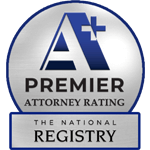If you are like others in Oregon who are struggling with overwhelming debt, then you might have considered filing for bankruptcy. Through a chapter 13 filing, you may be able to regain control of your finances without liquidating your assets. However, at The Law Office of Kim Covington, we know that the chapter 13 bankruptcy process may be confusing for some. In this post, we will discuss how chapter 13 bankruptcy works.
Similar to other bankruptcy filings, your chapter 13 bankruptcy begins with you filing a petition with the court. This petition should include your employment earning statements for the 60 days prior to your filing and a statement of your financial affairs, as well as lists of your current expenditures and income, your liabilities and assets, and your unexpired leases and executory contracts. Additionally, you must include a certificate showing that you have completed credit counseling and your most recent tax return.
In addition to information about your financial situation, you must also submit a repayment plan for court approval. According to the U.S. Courts, your chapter 13 repayment plan may be filed with your petition or within 14 days after filing. This plan will detail how you will pay down your debts. You will make payments to your bankruptcy trustee who will then distribute the funds to your creditors as specified in you plan. These payments are typically made on a biweekly or monthly basis over the course of your repayment plan.
After you have filed your petition for bankruptcy, your trustee will hold a meeting of the creditors. During this meeting, you will be placed under oath and the trustee and your creditors will have the opportunity to ask you questions about your proposed repayment plan or your financial situation. The meeting of the creditors is generally held between 21 and 50 days after you file for bankruptcy.
Within 45 days of the meeting of creditors, a bankruptcy judge will hold a confirmation hearing. You, your trustee and any of your creditors who want to may attend this hearing. At this time, the judge will determine whether your plan meets the U.S. Bankruptcy Code’s standards and whether or not it is feasible. If your plan is confirmed, then both you and your creditors are bound to its provisions.
For more information about wage earner repayment plans, please visit our chapter 13 page.



